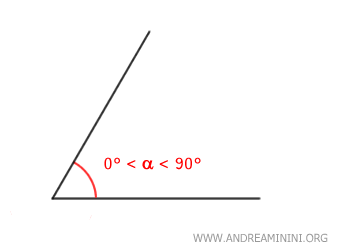Difference Between Right, Acute, and Obtuse Angles
An angle is classified as right, obtuse, or acute based on its measure:
- Right Angle
A right angle measures exactly 90 degrees ( π/2 radians ).
A right angle is half (1/2) of a straight angle (180°) and one-quarter of a full rotation (360°). It is formed when two lines intersect perpendicularly. When two perpendicular lines intersect, they create four right angles. For example, a square or a rectangle always has four right angles.

- Obtuse Angle
An obtuse angle measures more than 90 degrees (π/2 radians) but less than 180 degrees (π radians).
In other words, an obtuse angle is a convex angle that is wider than a right angle but less than a straight angle which measures exactly 180 degrees.

- Acute Angle
An acute angle measures less than 90 degrees. In radians, it is less than π/2 radians.
An acute angle is narrower than a right angle. Acute angles are often found in acute triangles, which are triangles where all three angles are acute, meaning each is less than 90°.

Observations
Some observations about right, acute, and obtuse angles:
- In a triangle, the sum of the interior angles is always 180 degrees. Therefore, a triangle cannot have more than one obtuse angle or more than one right angle.
- All right angles are congruent to each other, meaning they all have the same measure.
